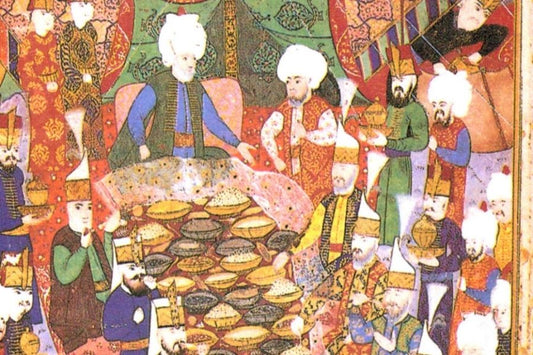As humans embarked on a journey to understand and understand nature, realizing the need to be in harmony with it for survival, they began to consider the surrounding trees and water sources sacred. Observations such as the seasonal cycle of nature, where leaves shed in autumn and re-emerge in spring, were linked to the cycle of life and death. The fact that some trees do not shed leaves was interpreted as a symbol of immortality, and these trees were seen as the source of eternal life.
The Tree of Life Motif and Its Cultural Reflections
A Universal Symbol: The Tree of Life
The sacred motif known as the "tree of life" is found in nearly every civilization. While interpreted differently across cultures, it is associated with themes such as knowledge, destiny, life, death, immortality, and rebirth. It has also been used as a symbol for protection against evil spirits.
The Tree of Life in Anatolian Seljuk Art
During the Anatolian Seljuk period, the tree of life was depicted topped by a double-headed eagle, flanked by mythological creatures such as lions, dragons, sirens, and winged lions. It was adorned with birds perched on the branches or pomegranates, a symbol of fertility. These depictions can be found on the tiles of the Kubadabad Palace and in stone reliefs on the portals of mosques, tombs, and madrasas.
Shamanism and the Cosmic Tree Concept
The tree of life motif is directly linked to Central Asian shamanistic beliefs. The tree's branches, rising to the sky, symbolize the soul of the deceased reaching God. Its roots extend underground, connecting it to the underworld, its trunk to the earth, and its branches to the sky—in other words, it is positioned at the center of the universe.
Trees in Mythology and Legends
Many legends treat trees as the source of life. The first human, hero, or tribe is said to have descended from trees. Therefore, trees are associated with fertility and abundance. Greek mythology particularly mentions nymphs, such as the Dryads, who protected oak trees, and the Meliae, who protected ash trees. The origin stories of certain trees, such as laurel and cypress, further enhance their symbolic meaning. Throughout history, trees have been considered a gift from God to humanity because of their abundant crops in various cultures, and as such, they have been used as symbols of fertility.
Trees in the Quran and Hadith
When describing Paradise in the Quran, the greenery, fruits, and shade of trees are highlighted. The hadiths also mention the characteristics of Paradise trees. Trees are a symbol of both earthly and otherworldly life.
Tree Motif in Ottoman Art
Black Memi and Spring Tree Motif
The spring tree motif, which emerged in the designs of the nakkaşhane artist Kara Memi during the reign of Suleiman the Magnificent in the 16th century, appears on the lacquered binding of the forty hadith manuscript dedicated to Prince Mehmed. This motif was later reflected in tiles, silk fabrics, and carpets.
Iznik Tiles and Trees
Motifs such as date palms, pomegranates, cypresses, and blossoming fruit trees are frequently seen in İznik tiles. In the tiles adorning buildings built by Mimar Sinan, blossoming branches of plum, cherry, apple, or peach trees rise upwards, covering the surface. The tile panels at the Hürrem Sultan Tomb in Istanbul, the Rüstem Paça Mosque, the Atik Valide Mosque, the Selimiye Mosque in Edirne, and the entrance to Murad III's Privy Chamber in Topkapı Palace, as well as later examples from the Sultan Ahmed Mosque, sometimes depict detailed tree trunks, while other times, with a more decorative approach, only the branches are shown. Trees with fruit-laden branches are very rare, and early examples appear in the hand-carved wall decorations of the Muradiye Mosque in Edirne. Tile panels depicting apple trees, like those in the Selimiye Mosque, are very rare; similar examples are found in 18th-century carvings. In this century, small trees surrounding buildings are more common in landscape designs. While their designs are quite simple, cypresses, pines, plane trees, date palms, weeping willows, and fruit trees like pomegranates and apples are often identifiable. Considering the trees' allusion to the gardens of Eden, it's understandable that artists eagerly employed tree motifs to bring paradise into the living space. Trees, whether naturalistic or stylized, symbolizing life and immortality, became a central theme in their compositions.
A Heritage with Roots in the Past and Motifs Living Today
The tree motif is not merely a decorative element; it symbolizes humanity's deep connection with nature. This motif, which depicts the cycle of life, immortality, fertility, and abundance, has left its mark on numerous fields, from mythology and religion to tradition and art. This aesthetic, which reached its peak during the Ottoman and Seljuk periods, continues to endure today. Explore our tree-themed Iznik tiles to bring this cultural heritage into your living spaces.




